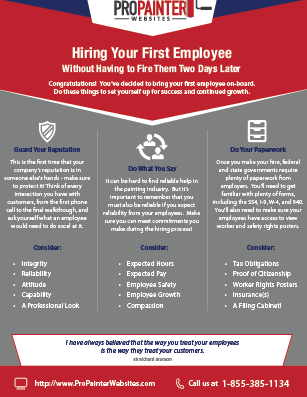Explore The Impact Of Seasonal Components On The Effectiveness Of Business External Paint And Identify The Ideal Times To Accomplish Long-Lasting Outcomes For Your Task
Explore The Impact Of Seasonal Components On The Effectiveness Of Business External Paint And Identify The Ideal Times To Accomplish Long-Lasting Outcomes For Your Task
Blog Article
Short Article By-Carlson Skafte
When you're planning a commercial external painting job, seasonal variables can make or break your results. You'll intend to take into consideration exactly how temperature and moisture effect paint application and drying out times. Selecting the ideal period can ensure your paint sticks correctly and lasts longer. Yet which seasons are truly the very best for this kind of work? Let's check out the key elements that can influence your task's success.
The Influence of Temperature on Paint Application
When you're intending an industrial exterior paint job, the temperature can significantly influence how well the paint adheres and dries out.
Ideally, you intend to paint when temperatures range between 50 ° F and 85 ° F. If it's also cold, the paint might not heal effectively, bring about problems like peeling off or breaking.
On the other hand, if it's too hot, the paint can dry as well rapidly, avoiding proper bond and resulting in an irregular surface.
You must likewise consider the moment of day; early morning or late afternoon uses cooler temperatures, which can be extra desirable.
Constantly check the maker's referrals for the certain paint you're making use of, as they often give guidance on the excellent temperature level array for optimal results.
Moisture and Its Impact on Drying Times
Temperature isn't the only environmental factor that affects your commercial outside painting job; moisture plays a significant function too. High moisture degrees can reduce drying out times significantly, affecting the total quality of your paint job.
When the air is saturated with moisture, the paint takes longer to cure, which can bring about problems like poor bond and a higher risk of mildew growth. If door painters near me on a specifically damp day, be gotten ready for prolonged wait times between layers.
It's essential to keep track of regional weather and plan accordingly. Preferably, aim for moisture levels between 40% and 70% for optimal drying.
Maintaining Read Home Page consider mind ensures your task remains on track and provides a long-term finish.
Best Seasons for Commercial Outside Paint Projects
What's the very best season for your business external paint projects?
house painting service and very early autumn are generally your best bets. Throughout these seasons, temperatures are mild, and humidity levels are often reduced, producing optimal conditions for paint application and drying.
Avoid summer season's intense heat, which can create paint to dry as well swiftly, bring about bad bond and finish. Similarly, winter season's chilly temperature levels can impede correct drying and treating, risking the long life of your paint work.
Go for days with temperature levels in between 50 ° F and 85 ° F for ideal results. Bear in mind to examine the neighborhood weather forecast for rainfall, as damp conditions can spoil your project.
Preparation around these elements ensures your painting job runs efficiently and lasts longer.
Final thought
To conclude, intending your business external paint jobs around seasonal factors to consider can make a significant difference in the result. By organizing work throughout the suitable temperature levels and moisture degrees, you'll ensure much better adhesion and drying times. Bear in mind to watch on neighborhood weather forecasts and select the correct time of year-- springtime and early fall are your best choices. Taking these actions will certainly assist you attain a sturdy and professional finish that lasts.
